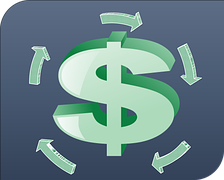Know Your 401(k)

Lucky you! You have a job with an employer that offers a 401(k) investment plan. Being the savvy investor you are, your 401(k) is in place, you are contributing at least what your employer has agreed to match if not the maximum contribution allowed. You have also consulted with a financial adviser to determine how those funds are best invested; and – if you have substantial unsecured debt – a determination whether any available monies should be utilized to settle all or part of that debt.
Now you can sit back and let your 401(k) make you money, right? Not necessarily.
You might think your company’s matching funds are making you rich when you find your company is not contributing a penny. How can this happen when your employer said that they matched funds? Some companies require a three to five year vesting period. This means that if you leave that company before working for them at least three to five years, they do not owe a penny towards your 401(k).
Another pitfall could be borrowing from your 401(k). Use your 401(k) only as a last resort since any loans made from your 401(k) must be paid back immediately. You absolutely must repay them prior to leaving that company. If you do leave for a new job, or are fired or quit with that loan still outstanding, you will be responsible paying a sizeable chunk of money. This is because you will owe taxes on the loan amount as well as a 10% penalty for early withdrawal from your 401(k) fund. Ironically, your very own 401(k) account could turn out to be the harshest debt collector you have ever met.
Leaving the Company or Rolling Over Funds
 If you leave the company with less than $5,000 in your 401(k), you could get cashed out. If this happens, you need to roll over your 401(k) within 60 days. If you don’t comply with the 60 day period to re-invest your funds upon withdrawal, you will be subject to taxes plus the 10% withdrawal fee.
If you leave the company with less than $5,000 in your 401(k), you could get cashed out. If this happens, you need to roll over your 401(k) within 60 days. If you don’t comply with the 60 day period to re-invest your funds upon withdrawal, you will be subject to taxes plus the 10% withdrawal fee.
If you roll over your funds directly from your employer, the company will simply make a check out to your IRA trustee or your new employer’s 401(k). Otherwise, the company will make the check out to you, but withhold 20% for taxes. Sure, you’ll get the money returned to you when you file your taxes the next year, but in the mean time you must replace it or face income taxes and a 10% early-withdrawal penalty. (There are a few exceptions to this, including if you are in the hospital, or if the financial institution administering the distribution has made some sort of error.) Also, be aware that once you exceed that 60 day time period, that money is yours; you cannot reinvest it in a rollover IRA or a new 401(k).
Request an Itemized Accounting of Your 401(K) Investments
 Check to see if you are being charged any sales fees to buy the mutual funds in your plan. Paying fees like these is unacceptable and could shave as much as 4% off everything you invest. You could also be paying 12b-1 fees that cost you as much as a percentage point of your returns each year. In addition, there are other fees an employer might be passing along to employees, such as investment transaction fees and even record-keeping fees. Suddenly, those company matching funds become far less enticing. If you find that this is happening to your 401(k) investment, consider starting a movement with fellow employees to lobby your employer to switch to a no-load 401(k) provider.
Check to see if you are being charged any sales fees to buy the mutual funds in your plan. Paying fees like these is unacceptable and could shave as much as 4% off everything you invest. You could also be paying 12b-1 fees that cost you as much as a percentage point of your returns each year. In addition, there are other fees an employer might be passing along to employees, such as investment transaction fees and even record-keeping fees. Suddenly, those company matching funds become far less enticing. If you find that this is happening to your 401(k) investment, consider starting a movement with fellow employees to lobby your employer to switch to a no-load 401(k) provider.
Find Out if Your 401(k) Fund is Buying Tax-Advantaged Investments
There are lots of plans out there like 403b retirement plans for schools and non-profit organizations that offer these types of investment-like annuities. Be aware: this is unnecessary in a 401(k) investment plan since your retirement plan is already tax-deferred. Since these variable annuities generally have lower returns and higher costs, this usually doesn’t seem to make any financial sense.
If you see this happening in your plan, contact you plan administrator to see if you can transfer the tax-free part or all of your account into a 403b7 account. These accounts are invested in mutual funds without an insurance wrapper. But, be careful because, if you do not do a trustee-to-trustee transfer, you risk incurring that 10% early withdrawal penalty. And if your annuities are subject to surrender fees, the maximum amount you will be able to transfer penalty-free from your retirement account is 10% annually.
Please Note: This information is for educational purposes only. For specific advice, please contact a qualified professional.



 Login
Login






